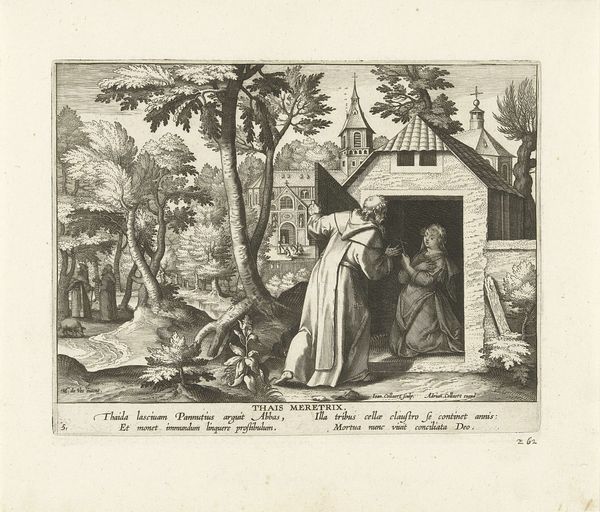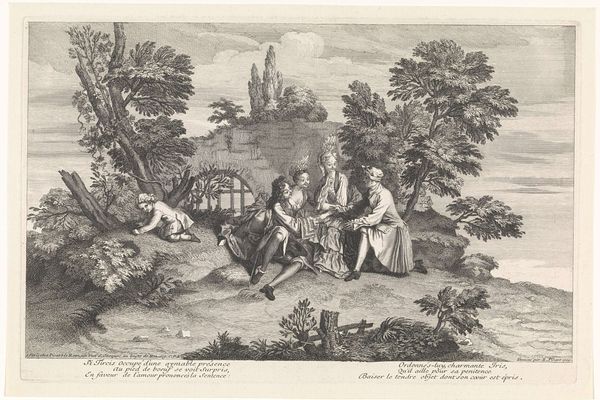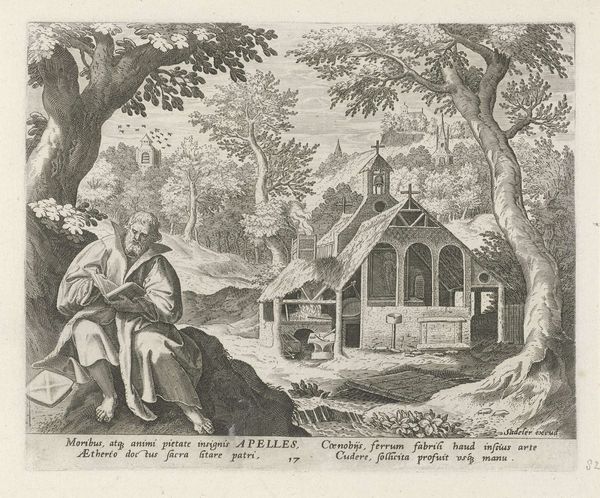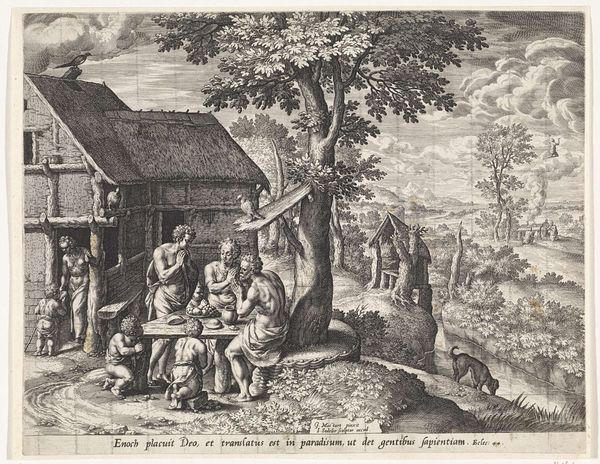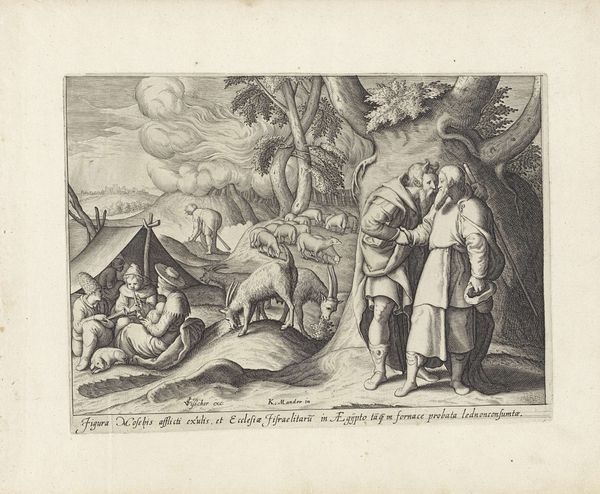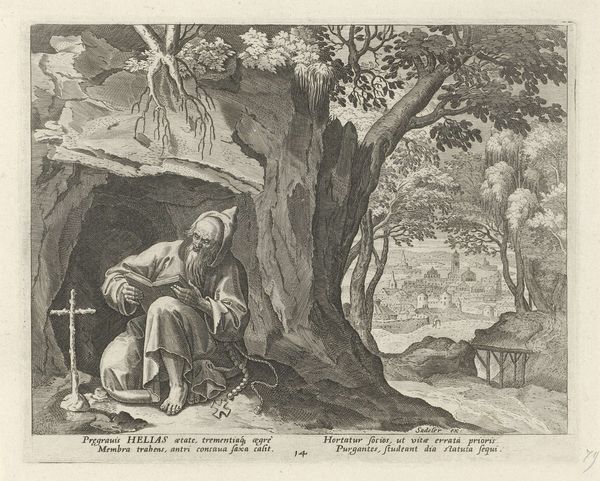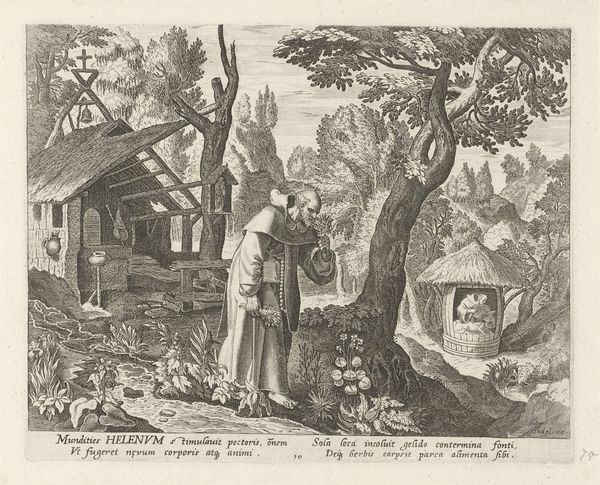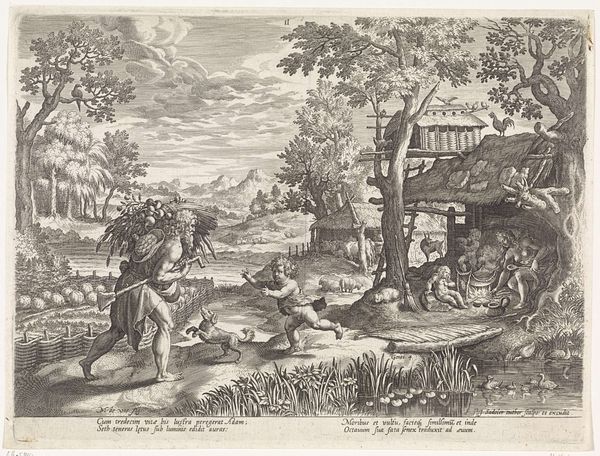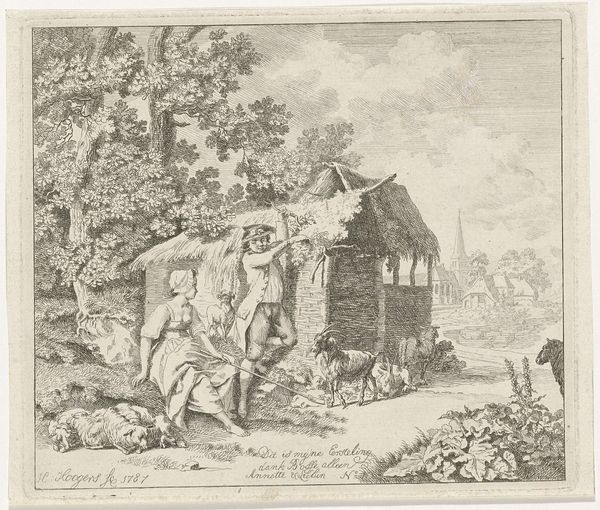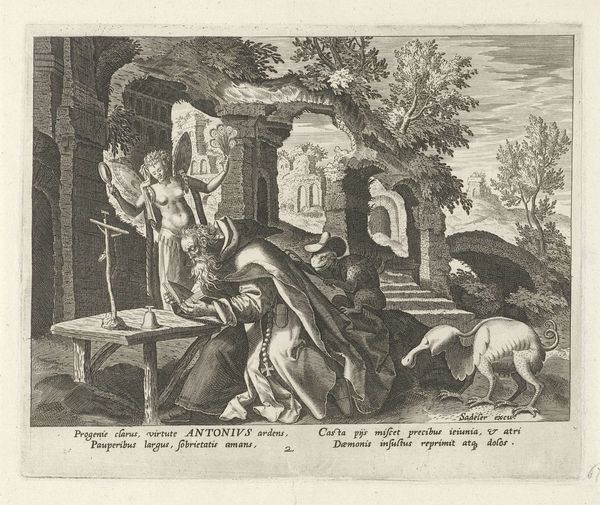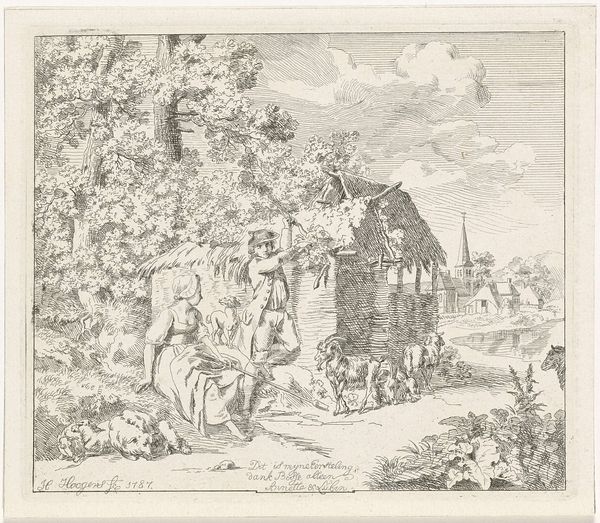
print, engraving
#
narrative-art
# print
#
old engraving style
#
landscape
#
figuration
#
northern-renaissance
#
engraving
Dimensions: height 179 mm, width 224 mm
Copyright: Rijks Museum: Open Domain
Editor: We're looking at "Holy Woman of Jerusalem," an engraving by Jan (II) Collaert from around 1570 to 1618. It has a really serene quality to it, despite the stark lines of the engraving. I'm curious about the symbolism within this piece, could you share your insights? Curator: The symbols are fascinating, aren't they? The image presents a woman, enclosed in what appears to be a hermitage or a small shelter. What feelings does that enclosed space evoke for you? Editor: A sense of both protection and confinement, maybe voluntary imprisonment for spiritual reasons. Curator: Precisely! Notice how the architectural details aren't just decorative but contribute to this theme. The hermitage isolates her from the world, signified by the small offering she receives from the monk – sustenance, but also a connection to the outside world. This suggests the dichotomy between worldly rejection and reliance on community. But what about the landscape behind them? Editor: The landscape seems idyllic, yet also separate from the immediate enclosure, reinforcing her choice. Is the act of offering related to earlier Christian symbology of women and charity? Curator: Absolutely! Charity is visualized, here. This connects her with the earlier ideas, but in a late-Renaissance world, images like this speak of inner spiritual strength achieved through denial and faith. The landscape and architectural setting were laden with religious and social symbolism; images like this served not only as art, but instruction. What do you take away from how the artist weaves all this together? Editor: It's fascinating how it portrays not just religious devotion, but also comments on society's view of women and religion at the time through its complex layering of symbols. Curator: Exactly. By unpacking these layers of symbolic meaning, we reveal aspects of cultural memory and continuity, deepening our comprehension of this artwork and its era.
Comments
No comments
Be the first to comment and join the conversation on the ultimate creative platform.
